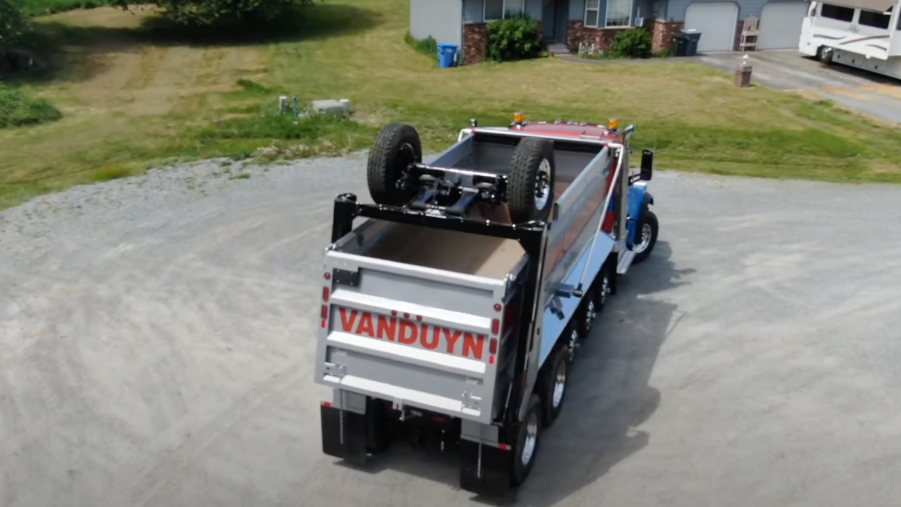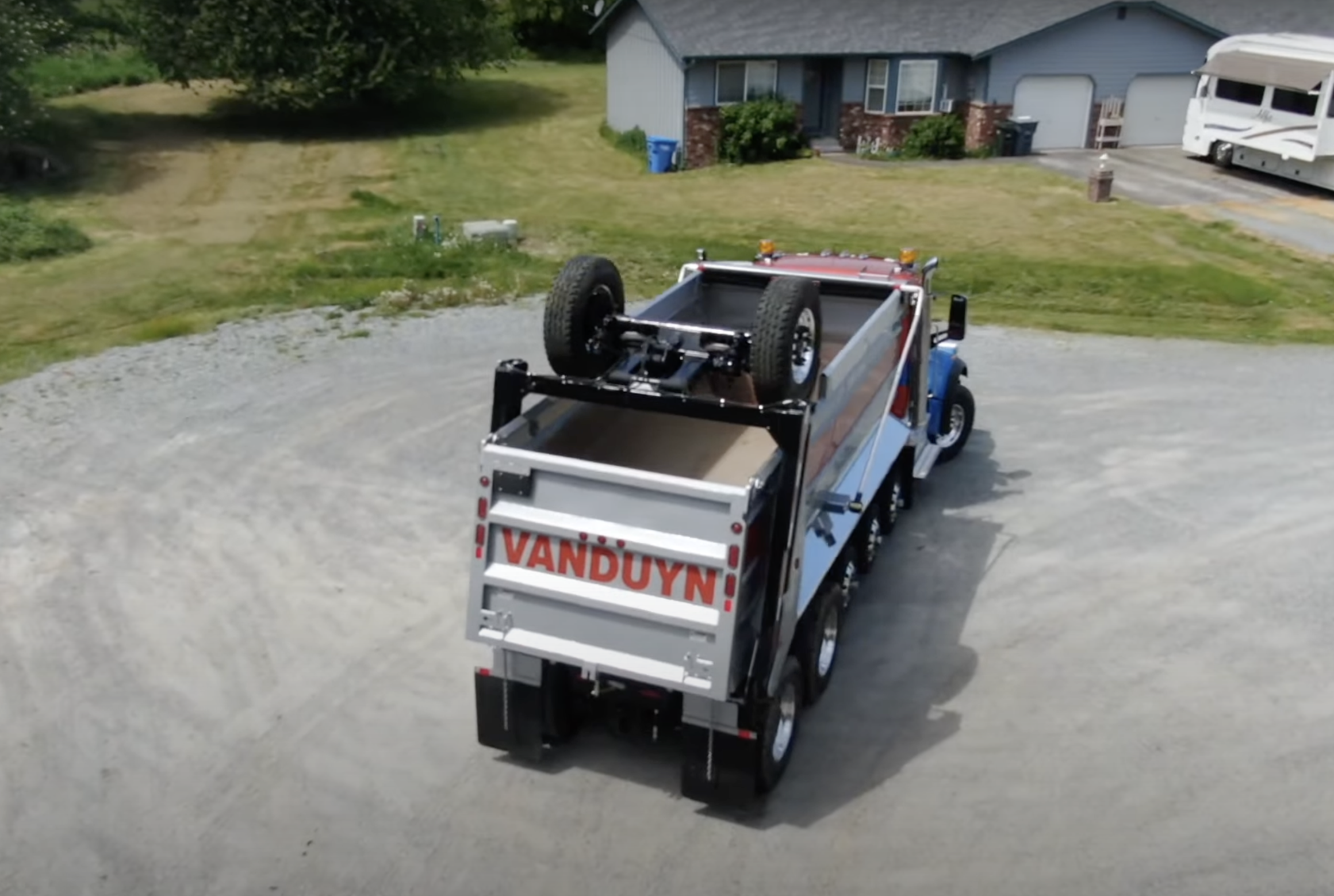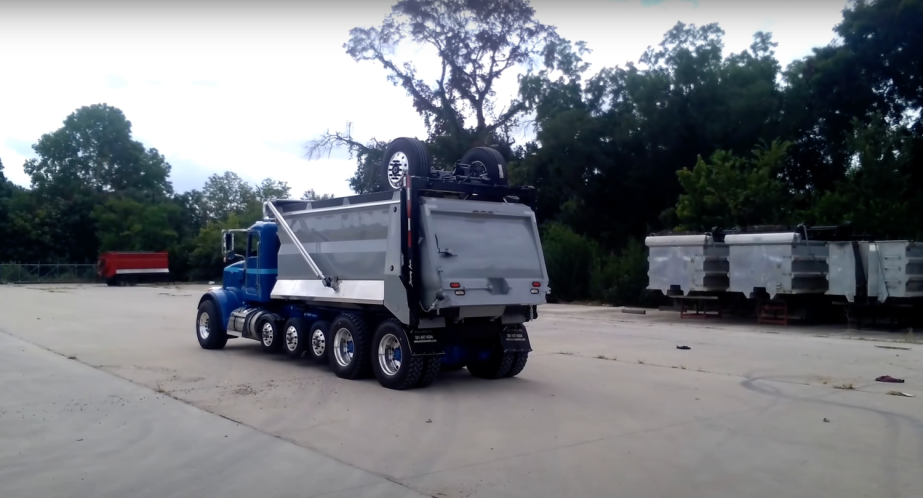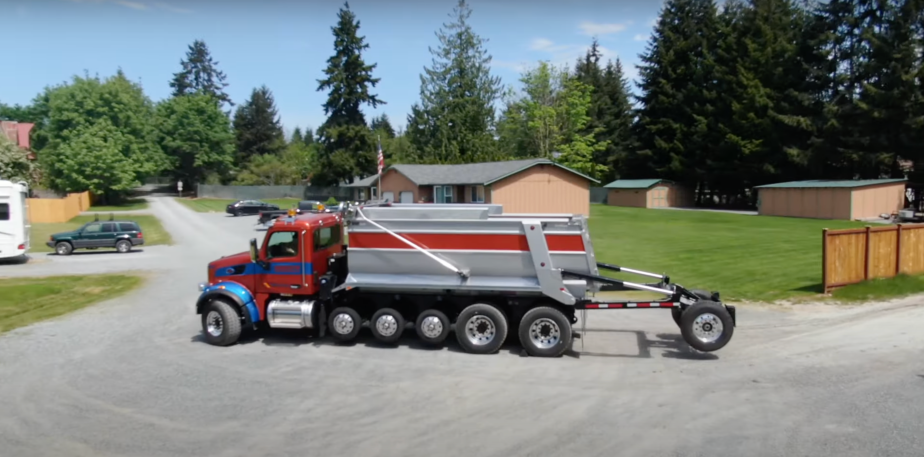
Why Do Some Dump Trucks Have Wheels Up Top?
Have you ever noticed trucks driving down the road with wheels mounted to their roofs? These aren’t spare tires. They are entire axles engineered to be lowered to the ground behind a commercial vehicle to help carry extremely heavy loads.
Why do many commercial trucks have extra axles?
Many commercial trucks have extra axles, whether they are hanging in the middle of the truck, behind the main axles, or on the roof. They are all engineered to take some of the truck’s weight when it is heavily loaded. But they can all tuck up out of the way when not needed.

This may seem like a complicated solution. Why not leave these solid axles on the ground all of the time? More rolling axles mean more moving parts wearing out. It also may make a truck a bit more difficult to drive.
But more tires on the ground means less pressure on any one point of the road. Therefore, some municipalities list a maximum weight per axle for certain roads or bridges–according to the Washington Post. Clever engineers have devised a whole range of flexible axles. But the most dramatic of these is the rooftop rear axle.
Why do some shorter trucks have rooftop axles?
Have you ever noticed axles atop the roofs of heavy-duty trucks such as dump trucks? These are designed to hinge down behind the truck to help carry heavy loads. They hinge behind the truck to extend its wheelbase, often to meet local commercial vehicle regulations.

Why would you need an extra axle behind a truck? Because on some roads, the weight a truck is allowed to carry depends on its wheelbase. This regulation is intended to spread out the weight of a heavy load and do less damage to roads and bridges.
Truck owners don’t want to operate an extremely long truck all of the time because of higher fuel and repair costs. But if they occasionally want to carry heavier loads in places where a longer wheelbase is required, they need to meet regulations some how. This dilemma led to the invention of rooftop drop axle.
What types of temporary axles can big trucks have?
A large truck can have a range of types of temporary axles. Lift/drop axles tuck between the front and rear axles of semi trucks. Tag axles hang behind the main (driven) rear axles. Finally, rooftop drop axles can extend the wheelbase of a shorter truck.

If a truck’s wheelbase is long enough to meet any regulations it may encounter, a regular lift/drop axle may be the simplest solution. This axle is mounted to the frame between the existing front and rear axles. It hangs on airbags so the truck’s driver can raise or lower it with the press of a button.
Some heavy vehicles with a long rear overhang (such as RVs) don’t have a long enough wheelbase for certain roads. These vehicles can be beefed up with a non-driven rear axle behind the main (driven) axles. These are called tag axles, whether or not they can lift up or are fixed.
Next, read why semi truck have yellow lights on their roofs or see extra dump truck axles in action in the video below:



